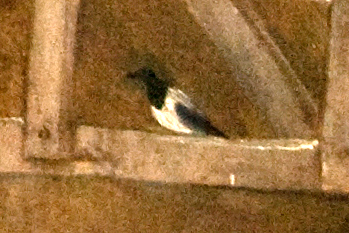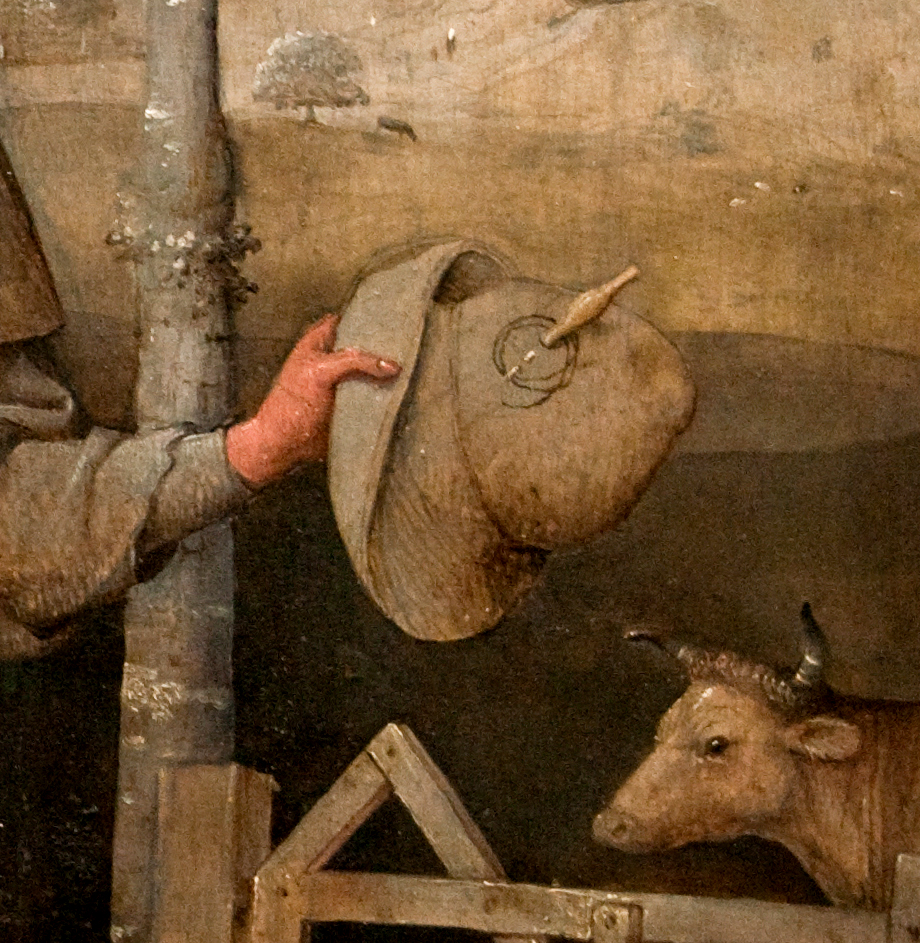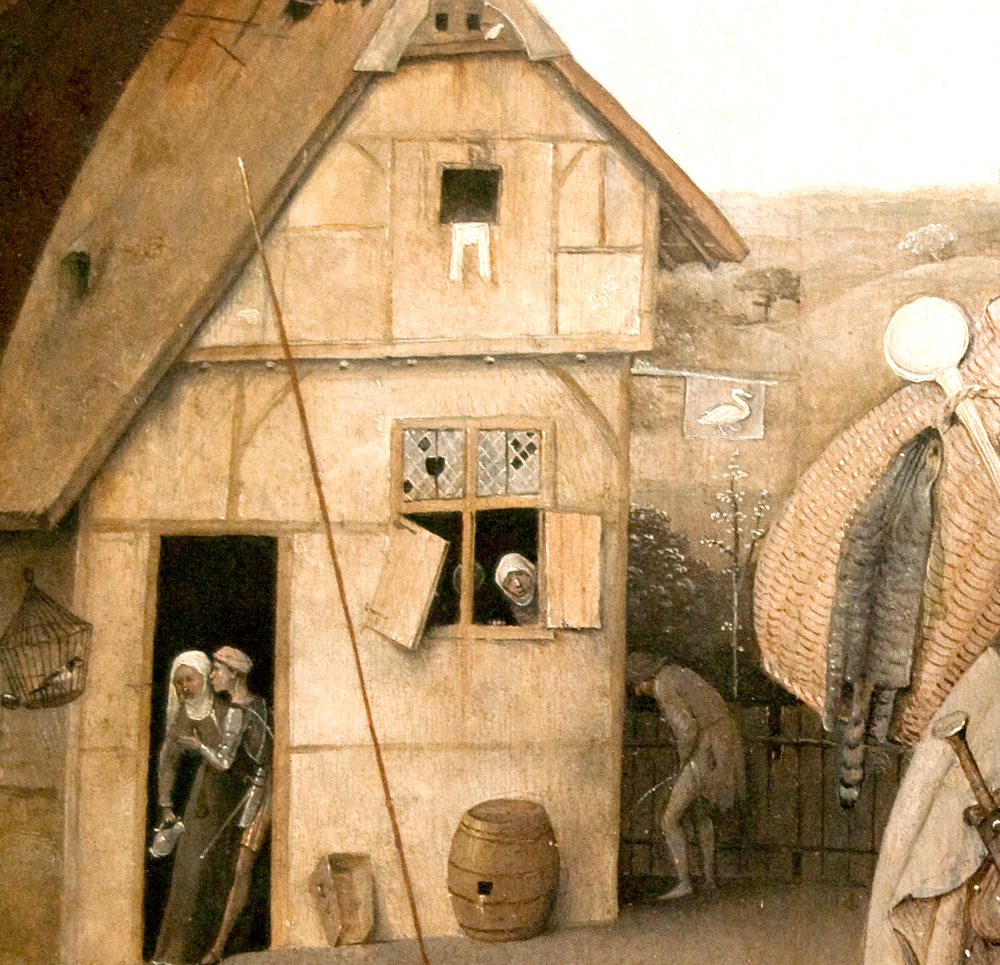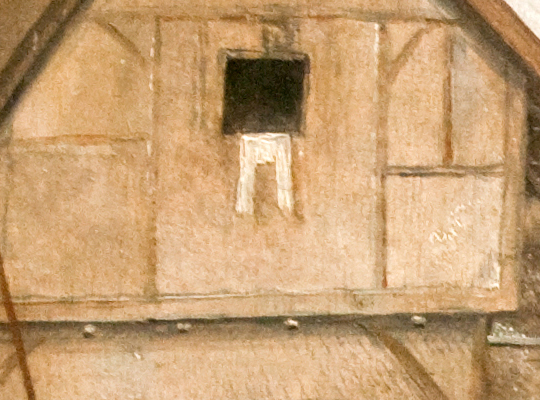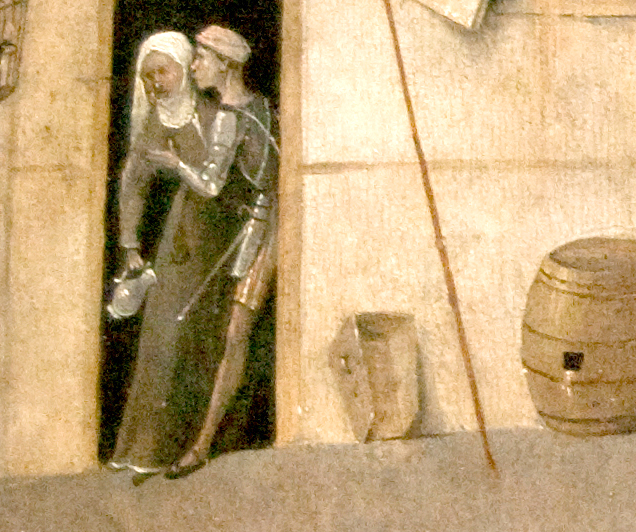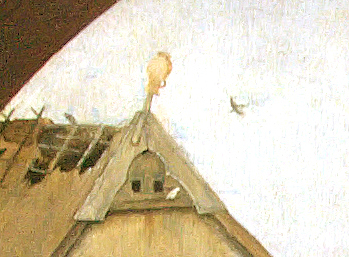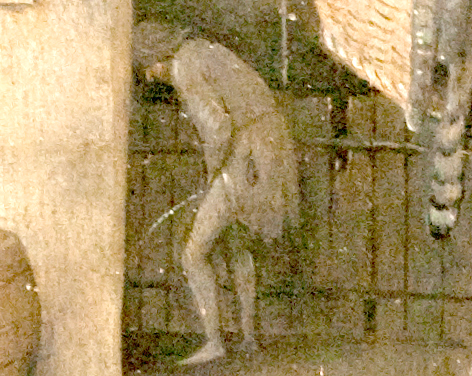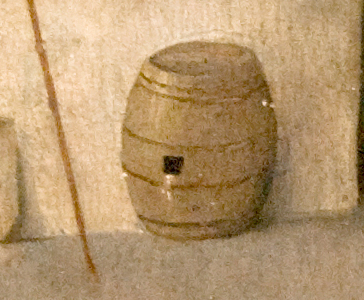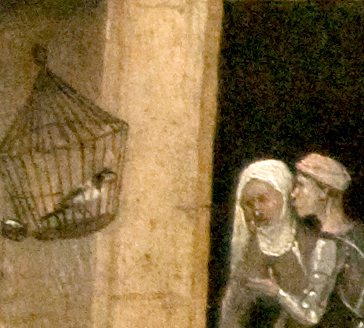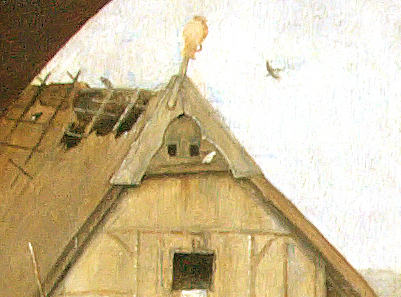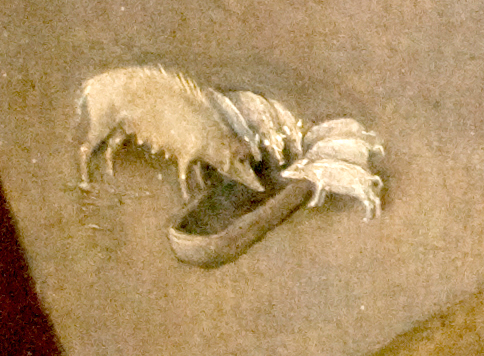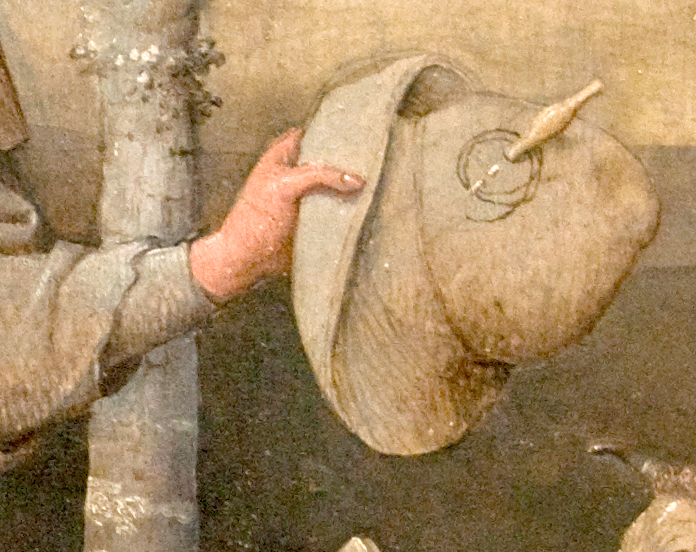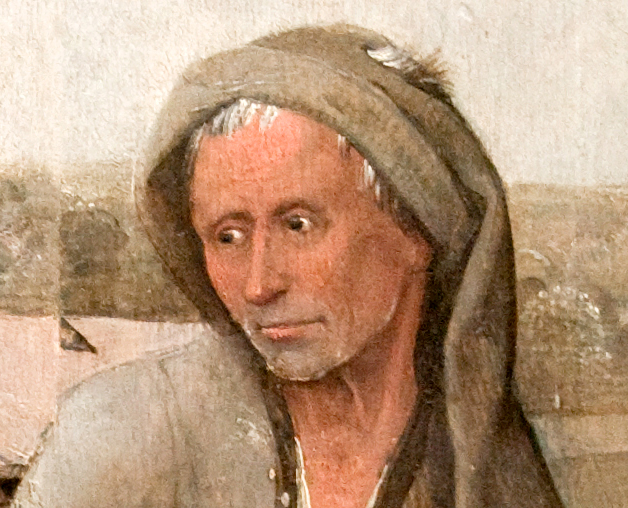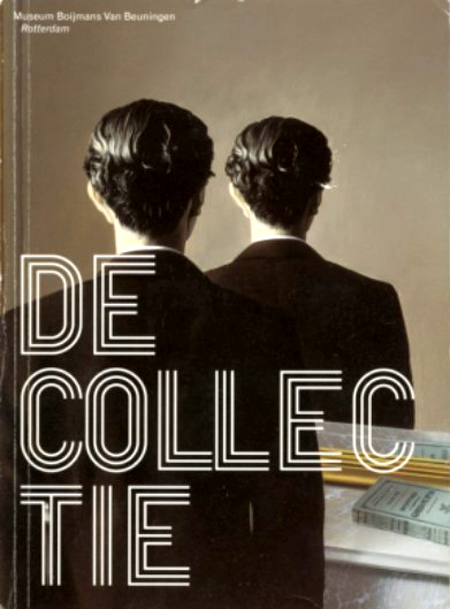Jheronimus Bosch (1450–1516)
(Boijmans Van Beuningen)
Jheronimus Bosch is known for his densely packed paintings, which are, as it were, a cacophony of scenes on a single canvas.
♦♦ Description of The Pedlar ♦
The painting symbolizes the journey of a human being through life. That one does not get through life unscathed is shown by the hole in his trousers and the bandage around his leg.
The basket on the man’s back represents the burden that every person carries with them. Everything in this painting has a meaning, but exactly what that meaning is remains a matter of differing opinions.
Jheronimus Bosch used often shocking imagery to point out to people what awaits them if they stray from the straight path—the biblical narrow road of light and truth. In this work, that idea is depicted quite literally.
The peddler walks along a narrow path toward a gate that, curiously, stands freely in open space. He could easily walk around it, yet he must continue following the narrow path. The gate represents the boundary between life and death.
The black-and-white coloring of the magpie on the gate symbolizes the final judgment: will it be heaven (white) or hell (black)? In the end, things turn out well.
Behind the gate lies a well-fattened cow and stands a small tree in bloom. A better life after death is the peddler’s reward, because he has remained on the narrow path and turns away from life’s sinful temptations. Bosch has depicted those temptations in this painting in an unmistakable way, with an inn that is in fact a brothel. White underwear hangs from the upper window, indicating that people undress in this house.
In the doorway, a woman is being groped by a foot soldier who has leaned his lance at an angle against the house. His rapier (sword) hangs downward and symbolizes his penis, just as the jug in the woman’s hand is a reference to the vagina. Between the rapier and the jug hangs the woman’s purse, indicating that nothing happens here without payment.
This is also evident from numerous other details, such as the pitcher on the finial at the roof ridge, the man urinating, the barrel without a stopper, the birdcage by the door, and the dovecote on the roof.
These are symbols that contemporaries understood effortlessly, for Bosch relied on sayings and folk wisdom that he depicted almost literally.
His visual language is not exclusive. These motifs can also be found on pilgrim badges that were produced in large numbers during the Middle Ages. But Bosch created wondrous visions with these images and had a clear purpose in doing so.
As a follower of the Modern Devotion, Bosch opposed the belief in predestination, but sought to show that by living a good and righteous life, a person can indeed influence their fate and earn a place in heaven.
That is the true meaning of The Pedlar.
To convey that message to the “common people,” who were still illiterate, Bosch made use of their own (visual) language. The close connection with language is also evident in the proverbs and sayings that appear in the painting, such as:
- “Barking dogs don’t bite” (the yapping little hellhound),
-“Many pigs make the slop thin” (the pigs around an empty trough),
- “With hat in hand, one can travel the whole land” (be polite). Bosch’s work cannot be separated from the social and political unrest of the late Middle Ages and the widespread belief that the end of the world was near. This was further intensified by the terrible outbreaks of the plague.
The higher social class, to which Bosch also belonged, wanted to prevent the demoralized populace from giving in to a desperate approach to life. Bosch can be seen as a kind of preaching penitent. By exposing human sins and follies and linking them to images full of hell and damnation, he attempts to keep people on the right path.
In The Pedlar, Bosch is still gentle and optimistic, but since the work consists of two side panels of a triptych, with the central part missing, we do not know if this applied to the entire piece.
Some believe that the face of the peddler is a self-portrait of Bosch. However, because we do not have an authentic portrait of Bosch, we can only speculate. Bosch was highly regarded during his lifetime.
King Philip II of Spain collected his works (now in the Prado in Madrid). Many copies also exist. Some were produced in his workshop in ’s-Hertogenbosch, where family members—father, brothers, nephews, and uncles, who were also painters—worked under his guidance.
Erik Beenker / Boijmans Van Beuningen
The Collection
Bosch, Hieronymus – The Peddler
References
Erik Beenker / Boijmans van Beuningen
The Collection
Photo's
Wikipedia
.jpg)
Art lijst
Schilderijen
- Bosch, Hieronymus – The Peddler
- Bosch, Hieronymus_The Haywain triptych
- Botticelli, Sandro_Primavera / Spring
- Brueghel the Elder, Pieter – The Tower of Babel
- Campin, Robert — Mérode Triptych
- Courbet, Gustave_The painters Studio
- Dali, Salvadore_The Temptation of Saint Anthony
- Dou, Gerard_de Kwakzalver
- Eyck van Barthélemy_Stilleven met boeken
- Fra Angelico_Annunciatie
- Géricault, Théodore_Vlot van Medusa
- Magritte, Rene_Verboden af te beelden
- Matsys, Quinten_De geldwisselaar en zijn vrouw
- Memling, Hans_Twee paarden in een landschap
- Onbekend-16e eeuw_4 gedaantes van een arts
- Picasso, Pablo_Guernica
- Rembrandt_Abraham en de drie engelen
- Rembrandt_Elsje Christiaens
- Velazquez, Diego_Las Meninas
Schilderijen en de dokter
- Agenesia Sacrale (a rare congenital disorder in which the fetal development of the lower spine)
- Alopecia areata (hair loss)
- Arthrogryposis congenita (birth defect, joints contracted)
- Artritis psoriatica (inflammatory disease of the joint)
- Artritis reumatoïde
- Breast development (delayed)
- Bubonic plague
- Difterie (kroep)
- Gigantisme & Acromegalie
- Hazenlip (cheiloschisis) / gespleten gehemelte
- Herpes zoster (gordelroos)
- Hongeroedeem
- Influenza Epidemic of 1858
- Keisnijding
- Krankzinnigheid - Malle Babbe (1640)
- Kropgezwel (struma)
- Lepra
- Liefdesziek, zwangerschap
- Lymfkliergezwel (lymfoom), non-Hodgekin
- Manische Depressie Psychose
- Mazelen? / Rubeola? (acute virale infectie)
- Melanoom of naevus (geboortevlek)
- Membraneuze glomerulonefritis
- Moord (pneumothorax, slagaderlijke bloeding)
- Neurofibromatose
- Oogoperatie
- Osteoartrose / hallux valgus
- Osteomyelitis
- Otitis media (acute middenoorontsteking)
- Parotitis (mumps)
- Platvoet en Spitsvoet
- Polio
- Prepatellaire bursitis
- Progeria
- Pseudohermafroditisme
- Pseudozwangerschap
- Psychoneurose (acute)
- Rachitische borst
- Reumatische koorts (acute)
- Rhinophyma of knobbelneus
- Rhinophyma rosacea_depressie
- Rhinoscleroma
- Schimmelziekte_Favus
- Syfilis (harde 'sjanker')
- Tandcariërs
- Tuberculose long
- Ziekte van Paget
Schilders
Historie lijst
- 1632-1723_Antonie van Leeuwenhoek
- 1749-1823_Edward Jenner
- 1818-1865_Ignaz Semmelweis
- 1822-1895_Louis Pasteur
Wetenswaardigheden lijst
- 1887 Psychiatric Hospital
- Animals on duty
- Bizarre advice for parents
- Bloodletting
- Bloodthirsty Hungarian Countess Elizabeth Báthory (1560–1614)
- Butler escaped punishment three times.
- Dance mania / Saint Vitus Dance
- Doctors’ advice did more harm than good
- French Revolution Louis XVI
- Frontal syndroom (Phineas Gage)
- Heart disease (Egyptian princess)
- IJstijd (kleine)_1300-1850
- Ivan IV de Verschrikkelijke (1530-1584)
- Kindermishandeling
- Koketteren met koningin Victoria
- Koningin door huidcrème vergiftigd
- Kraambedpsychose (Margery Kempe)
- Massacre in Beirut
- ME stonden bol van de seks
- Mummie bij de dokter
- Plee, Gemak of Kakstoel
- Prostaatkanker (mummie)
- Sexhandel in Londen
- Swaddling baby
- Syfilis was in de mode
- Testikels opofferen
- Tropische ziekten werden veroveraars fataal
- Vrouwen als beul in WOII
- Wie mooi wil zijn moet pijn lijden
- Zonnekoning woonde in een zwijnenstal




